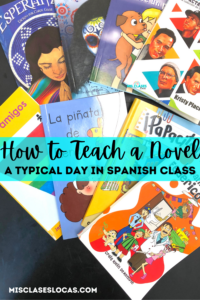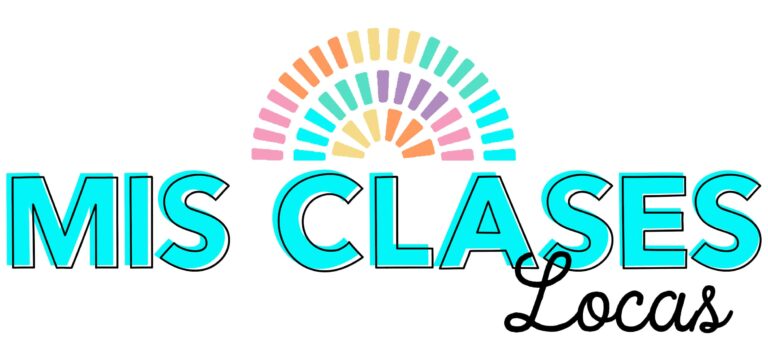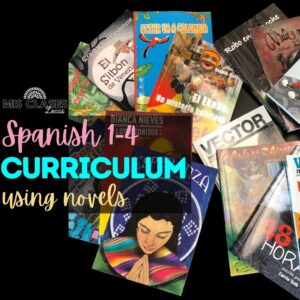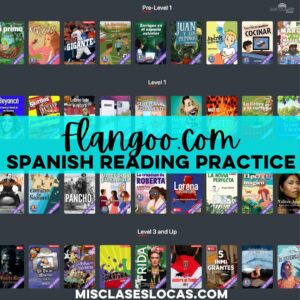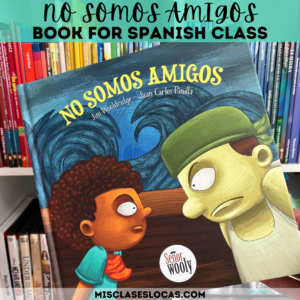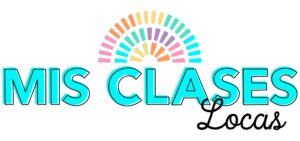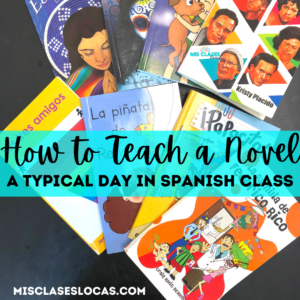
Teaching a Novel in Spanish Class
One of my most blogged-about topics is teaching with novels. I have also presented at IWLA, Comprehensible Iowa and CSCTFL on various topics related to teaching with acquisition-based readers for language learners. If you have ever looked at my curriculum, you know that a large portion of my units center on novels. With that, one of the most common questions I get is “what does a typical day teaching a novel look like?” Today I am going to try and answer that question.
As with everything, please remember that I do not have any secret formula for greatness and that I know my situation may be different than yours. (Remember I am a #deptof1 at a tiny school with complete freedom in my curriculum). Even if you are tied to a set curriculum, you may be able to squeeze in a novel at some point, or use one instead to “cover the same material” to get to your set end goal. I do firmly believe that novels can be used at any level, if you pick the right one. It is best to always start with an easier novel. I have used class novels as early as the first quarter of Spanish 1.
For this post, I am assuming that you have a class set of readers appropriate to the level of your students, as well as the amazing guides put out by the publishers. If you need more help finding funding, selecting books, organizing them, planning to teach, and assessing, please read Teaching a Novel 101 & How to Teach Comprehensible Spanish Books first and then come back.
“what does a typical day teaching a novel look like?
First of all, this completely depends on the day! Upper levels may be doing a different style with Literature Circles, I have done reading clubs with 1 novel and multiple groups, or I recently tried out teaching an actual novel in just one week. Read this post if you want to learn more about reading a novel quickly, or keep going here to see how it can be done over a couple of weeks as a full-class novel.
Most often, I front-load the culture and then read the books themselves pretty quickly as their own mini unit of about 3 weeks. For example, my Spanish 2 class spent about three weeks doing activities to prepare to read the book Esperanza. This included the films Living on $1 and Which Way Home, learning about the geography and history of Guatemala, digging deeper in the song Ave que emigra, as well as other activities to help students better understand the context of the book. We then spent just over three weeks focusing on the novel itself.
Here are some rough ideas of what a day reading looks like in my classes, while reading a novel over a couple of weeks. (Remember this is after spending a couple of weeks front-loading the culture and needed vocab).
Sample first day of a novel in Spanish class
- Intro or review a few new or key vocab – (ideas Quizlet Live, Charades, or TPR)
- PQA – (personalized questions & answers to get students connected to what will be happening)
- Read Chapter 1 (I always read the first chapter to the whole class, pausing to discuss projected discussion and checking for comprehension)
- Chapter 1 review (depending on time Kahoot, Quizizz, timeline, retell, storyboard or printed activity from the guide)
Sample extension day
When you have already read a chapter but need a lot more input (pick a one or a couple of these activities, not all!) I like to do extensions on days we start class with the free reading, as to spread out the reading, or on days when many students are gone and you do not want to go on with the story. See this post for many more ideas.
- Running Dictation
- Create Storyboard and then 2 line retell
- GimKit
- Blooket
- The Marker Game
- Activities from the teacher’s guide
- Reader’s Theater (acting it out)
- Quizlet Live Relay
- Interpersonal Conversation Circle
- Formative Assessment
- 4 Corners (with a Twist)
- 1, 2, 3, ¡SALTA!
- More ideas Fun Spanish Classroom Games
Sample later day of a novel in Spanish class
The key for later days is to mix up with you every day. Do not read the same way two days in a row, and try to not complete the same pre or post-reading activity more than once a novel. As we move further in the novel, the pace often picks up so as to not lose steam and forget the story. Read this post if you want to learn more about reading a novel quickly. Typically we do about one chapter per day or more if they are shorter.
- Review previous chapter(s) – (ideas small formative reading or listening assessment, Quizlet Live, Quizizz, posted discussion on the board, students reread with a partner or listening to audiobook if some time has passed, students present previous chapter readers theater style)
- Possible PQA – (personalized questions & answers to get students connected to what will be happening next)
- Read next chapter(s) – give some of options below (plus I always give the option to read with me pausing to discuss and checking for comprehension).
- Read alone
- Read out loud with a partner
- Small group reading
- The eacher reads to whole class
- Teacher plays audio recording and students follow along
- Teacher plays audio recording and silent actors act out the chapter
- Chapter review (depending on time maybe something from this post)
Sample Assessments for Spanish class novels
In my opinion, successful assessments of novel units allow students to show what they know about the novel, and the culture surrounding it. In my classes, these assessments are often performance-based assessments, evaluated using a language performance rubric. Most often we will end a novel with both a presentational writing assessment and an interpersonal speaking assessment, which are relatively open-ended. Lean more How to Assess a Novel in Spanish class
Speaking Assessment in Spanish Class
For interpersonal speaking I tend to do one of the following, depending on the level of student. I also like to give classes choices, since different personalities of classes and class sizes tend to fit better than others.
- Partner Speaking Assessment – Partners come up to my desk and ask each other questions about the novel. For early novice classes, I already have printed questions on pieces of paper that they can draw and ask each other. Everyone else is silently preparing to speak or to write the next day. (See Differentiation in Spanish Class & Spanish Question Cards for ideas on how to support all students)
- Small Group Speaking Assessment – Students come prepared with note cards of questions and all small groups speak simultaneously around the room as the teacher walks around and grades. This can be one of the hardest to manage unless you have smaller classes or have groups record the group conversation to watch and assess later. Update* Use any novel question cards to support all students.
- Fishbowl Speaking Assessment – Students come prepared with note cards of questions and only a third of the class in the “fishbowl” speak at a time, while others listen and prepare to jump in when they can. Read this post to learn more. This works well with Spanish 2 and above, and especially with controversial topics that spark debate and discussion.
Writing Assessments for Spanish novels
For presentational writing, I always post the possible writing prompts on Google Classroom a week in advance. This helps students choose their options if needed, and prepare a rough draft to be edited if they want. The writing assessments are always old school paper, pencil, and in class to make sure I see what the students know. Sometimes I let students have a note card of quotes from the book to justify, and help cross curricular work on in text citations with the English department.
The depth of knowledge of the writing prompts moves up with language ability. For example, simply retelling the book in early Spanish 1. Then, compare and contrast the characters and yourself. Or more advanced, creation of an alternate ending, epilogue, other point of view, or critical review.
Projects and other assessments for Spanish novels
If we have more time sometimes the end of a novel assessment is a choice project, such as a movie trailer, a project based assessment, or the creation of a project for a gallery walk. I have moved away from many projects since at my current school it would all have to use class time, and I am not really willing to give up that much time for projects that usually mean a lot of work time in English. Sometimes when I have been required to give a semester final that must be graded and input immediately, I have given some more traditional assessments with multiple choice and such, but this is rare now. Those become multiple guess and do not really show me what a student can do with the language.
For a deeper description, check out this post on how to assess a novel.
Please know that every class is different. If a novel is just not working out stop where you are, and leave it as a free reading option. There is no point in punishing yourself and your class to plow through something that is not working.
If you want to read more about teaching a novel, check out these posts:
- Literature Circles in Spanish class
- Teaching a Novel 101
- How to teach your 1st novel
- Research & Find Novel Funding + Organize & Plan for the novel
- Novel Resources – sorted by book
